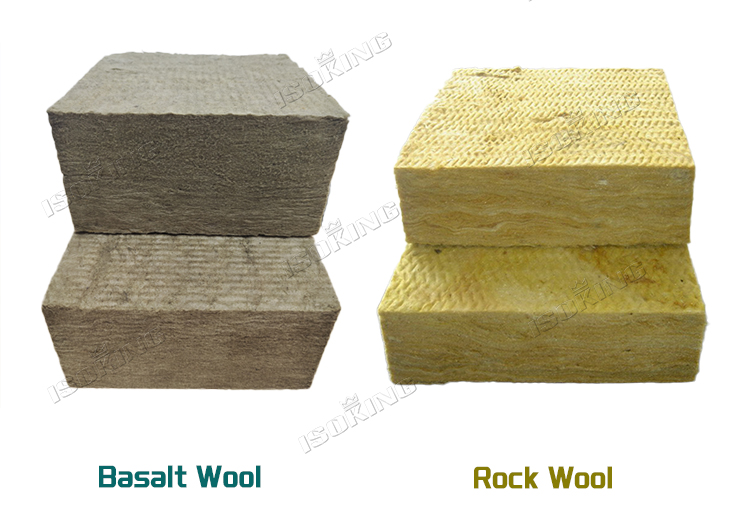IKING GROUP-INSULATION AND ACOUSTIC SOLUTION FOCUS
1. Terminology Mist: Naming Pitfalls and Truths in the International Market
1.1 Root causes of regional naming differences
European standard (EN 13162): Strictly distinguish between basalt wool (Basalt Wool ≥ 80% basalt) and mineral wool (Rock Wool ≥ 30% basalt+slag)
North American convention: ASTM C612 is collectively referred to as Mineral Wool, distinguishing between Type IA (basalt base) and Type IB (mixed base)
Asian market: Chinese GB/T 25975 defines basalt content ≥ 70% as A-level rock wool
1.2 Composition ratio
| Index | Basalt Wool | Rock Wool |
| Basalt content | ≥85% | 35-70% |
| Slag content | ≤5% | 20-65% |
| Adhesive type | Thermosets | Phenolic resin |
【 Engineering Warning 】 Japanese JIS A9504 stipulates that Basalt Wool (basalt content ≥ 90%) must be used for insulation in nuclear power plants
2. Quantum level differences in production processes
2.1 Temperature Password for Melting Process
Basalt Wool: Using plasma melting technology (1600-1700 ℃) to achieve complete vitrification of basalt
Rock Wool: Traditional coke blast furnace (1400-1500 ℃), slag composition leads to microphase separation
2.2 Structural Revolution in Fiber Forming
TEL centrifugal technology (Basalt specific):
Fiber diameter 3-5 μ m
Length to diameter ratio>2000:1
Three dimensional staggered structure density>120kg/m ³
Pendulum method (Rock universal):
Fiber diameter 6-9 μ m
Layered structure is prone to layering
Density fluctuation ± 15%
3. Comparison of Dimensionality Reduction of Perf
3.1 The lifeline of fire resistance performance
| Testing standards | Basalt Wool | Rock Wool |
| EN 13501-1 | A1 class(Non combustible) | A2 class(Limited combustibility) |
| ASTM E136 | Pass(Melting point>1000℃) | lose efficacy(800℃soften) |
| GB 8624 | A class | B1 class |
3.2 Black technology in acoustic performance
Standing wave chamber test data:
100mm Basalt layer: NRC 0.95(125-4000Hz)
Rock with the same thickness: NRC 0.82 (significant high-frequency attenuation)
3.3 Economic Account of Life Cycle
| Parameter | Basalt Wool | Rock Wool |
| Annual aging rate | <0.3% | 1.2-1.8% |
| 10-year strength retention | 92% | 68% |
| life cycle cost | $0.38/Year·㎡ | $0.67/Year·㎡ |
4. The golden matrix for selection decision-making
4.1 Three major scenarios that must be selected for Basalt Wool
Petrochemical plant insulation: resistant to H2S corrosion (ASTM G48 standard)
Cleanroom partition wall: Control fiber shedding (ISO 14644 Class 5)
Fire isolation zone: meets the 3-hour fire resistance limit (BS 476-22)
4.2 Economic Advantage Range of Rock Wool
Short term building envelope structure (<10 years)
Non load bearing soundproof filling layer
Temporary facility insulation

5. Strategies for breaking through technological barriers in international trade
5.1 Customs clearance password for authentication system
EU C certification: EN 13823 Combustion Growth Rate Index (FIGRA ≤ 120W/s) is required
North American UL certification: emphasizes ASTM C1338 wet heat aging test
Gulf GCC Certification: Mandatory GS 983 Fire Test
5.2 Devil's Details of Packaging and Transportation
Shipping moisture-proof treatment: Basalt requires double-layer PE film and desiccant (humidity<8%)
Ground transportation seismic packaging: using honeycomb structure cardboard boxes (compressive strength>8kPa)